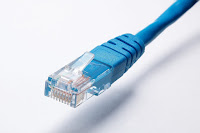Future-Proofing Your Home Network: Understanding the Latest Cable Technologies
Technology is developing at a dizzying rate. You have to make sure that your home's requirements are met by your cabling network. The appropriate Ethernet cable can save you money and time. Nonetheless, a wide range of cables are available, including Cat5e and Cat6 Ethernet cables, among many others.
You might think it's easy to choose the best Ethernet cable for your network if you understand the differences between the many kinds of Ethernet cables. Conversely, does this give you enough knowledge to enable you to make an informed decision? Are there any other considerations you need to make? You will find the answer in this article.
Understanding Ethernet Cable Categories
Ethernet cables are the lifeline of wired networks, with different categories offering varying levels of performance. Here’s a look at the most relevant categories for modern home networks:
Cat 5e Cables
Cat 5e cables are an enhanced version of the older Cat 5 standard. They offer speeds of up to 1 Gbps over distances up to 100 meters. While Cat 5e is adequate for basic networking needs, it’s becoming outdated for more demanding applications such as 4K streaming and online gaming.
Cat 6 Cables
Cat 6 cables significantly improve performance, supporting speeds up to 10 Gbps over short distances (up to 55 meters) and 1 Gbps over longer distances (up to 100 meters). They feature stricter specifications for crosstalk and system noise, making them a solid choice for home networks that require more bandwidth.
Cat 6 ethernet cables
Cat 6 ethernet cables extend the performance of Cat 6 by supporting 10 Gbps speeds over the full 100-meter distance. They offer improved shielding and reduced crosstalk, making them ideal for high-performance applications and future-proofing your network.
Cat 7 (Category 7)
Cat 7 cables support speeds up to 10 Gbps over 100 meters and offer additional shielding to reduce interference. They also support higher frequencies (up to 600 MHz), which can be beneficial in environments with significant electromagnetic interference. However, Cat 7 is less common and more expensive than Cat 6ethernet cables.
Fiber Optic Cables: The Future of Connectivity
While Ethernet cables are the current standard for home networks, fiber optic cables are rapidly becoming the gold standard for future-proofing. Unlike copper-based Ethernet cables, fiber optic cables use light to transmit data, offering several significant advantages:
Higher Bandwidth
Fiber optic cables can support much higher bandwidths than traditional Ethernet cables, ensuring that your network can handle increasing data loads without slowing down.
Longer Distances
Fiber optic cables can transmit data over much longer distances without signal degradation, making them ideal for larger homes or properties.
Immunity to Interference
Because they use light rather than electrical signals, fiber optic cables are immune to electromagnetic interference, providing a more stable and reliable connection.
Future-Proofing
With the ability to support future advancements in networking technology, fiber optic cables are a smart investment for those looking to build a truly future-proof home network.
Choosing the Right Cable for Your Home Network
When selecting cables for your home network, consider the following factors:
Current and Future Needs
Assess your current network demands and anticipate future needs. If you plan to stream 4K content, engage in online gaming, or have multiple smart home devices, investing in higher-category cables like Cat 6a or Cat 7 might be wise.
Budget
Higher-category cables and fiber optic solutions come at a higher cost. Balance your need for performance with your budget constraints, but remember that investing in better cabling now can save you money on future upgrades.
Installation Environment
Consider the environment where the cables will be installed. For areas with significant electromagnetic interference, shielded cables or fiber optic cables can offer better performance.
The Role of Wireless Technology
While wired connections offer the best performance, wireless technology is an essential component of a modern home network. Wi-Fi 6 (802.11ax) and the emerging Wi-Fi 6E offer significant improvements in speed, capacity, and latency over previous Wi-Fi standards. Integrating these wireless technologies with a robust wired backbone ensures comprehensive coverage and high performance throughout your home.
Conclusion
Future-proofing your home network involves understanding and investing in the latest cable technologies. By choosing the right Ethernet or fiber optic cables, you can ensure that your network meets current demands and is prepared for future advancements. For those seeking reliable and high-quality network cables,Datacomm Cables, Inc. offers a range of solutions to help you build a future-ready home network.
.jpg)



Comments
Post a Comment